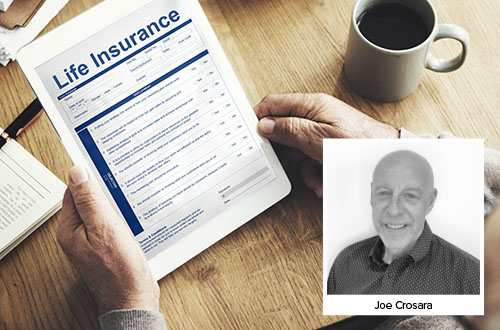Understanding Life Insurance Through Superannuation in Australia

According to our Personal Risk Insurance Manager, Joe Crosara, having the right life insurance is important to protect individuals and their families from the financial strain that can result from an unexpected death or disability. In Australia, one common way people access life insurance is through their superannuation fund. This arrangement offers various benefits, but it’s essential to understand how it works and its implications for your overall financial planning.
In Australia, many people have life insurance coverage through their superannuation fund. Many funds offer life insurance as part of their package. This can include;
- Death Cover: Provides a lump sum payment to your beneficiaries if you pass away.
- Total and Permanent Disability (TPD) Cover: Offers a lump sum payment if you become totally and permanently disabled and are unable to work.
- Income Protection Insurance: Provides a monthly benefit if you are temporarily unable to work due to illness or injury.
When you have life insurance through your superannuation, the premiums for the insurance are generally paid from your superannuation balance. This can be an attractive option because they are cost-efficient, as premiums are often lower due to bulk purchasing by the super fund, and convenient, as payments are deducted directly from your super account, eliminating the need for separate management.
Finding out what type and level of cover you have
Understanding the type and level of cover you have through your superannuation is essential to determine whether you need additional insurance to meet your and your family’s needs. Some will pay a lump sum to your loved ones if you die or are diagnosed with a terminal illness. Others will provide you and your dependents with monthly payments if you are unable to work for an extended time due to illness or injury. Generally, the cover will depend on the type of super fund you have:
1. Employer super fund
It’s compulsory for all employer super funds to provide members with some form of death and TPD cover. If your employer is paying super contributions into a super fund on your behalf, then it’s likely you will already have some insurance. However, it’s crucial to check with your super fund to determine the specifics of your coverage, including the amount and type of insurance provided. This will help you assess whether the coverage is adequate for your personal situation.
2. Self-Managed Super Fund (SMSF)
The KEY difference between a SMSF and other types of super funds is that, generally, as a member of a SMSF, you are also the trustee. This means you are running an SMSF for your own benefit.
Recent changes to Superannuation Industry Supervision (SIS) Regulations mean that SMSF trustees must now also consider the life insurance needs of SMSF members. If you have an SMSF, you should actively manage and review your life insurance options to ensure they meet your needs. This could involve arranging insurance policies directly through the SMSF or reviewing your existing coverage.
3. Super platform partners
Several life insurance companies in Australia partner with super funds to offer tailored insurance products. These partnerships allow you to select a product that provides insurance benefits through your super fund without needing an investment component. This can be a convenient way to secure coverage that fits your needs while managing it through your superannuation account.
Benefits of life insurance through superannuation
The main benefits of having insurance through superannuation include;
1. Tax benefits: Premiums paid from superannuation are generally tax-deductible for the super fund. This can make life insurance more affordable compared to paying for it from your after-tax income.
2. No Out-of-Pocket Expenses: Since premiums are paid from your super balance, you don’t need to budget for insurance payments separately.
Potential drawbacks
1. Reduced retirement savings: Premiums deducted from your super account reduce the amount of money available for your retirement. This could impact your long-term financial security.
2. Policy limitations: Default insurance policies through super might not cover all scenarios or offer the same level of coverage as a standalone policy.
3. Insurance changes: If you change jobs or super funds, you may need to reapply for insurance or face changes in coverage.
Reviewing your insurance needs
It’s vital to regularly review your life insurance needs and the adequacy of your cover through superannuation. Considerations include:
1. Personal circumstances: Changes in your personal or financial situation, such as having children or taking on new debts, may require adjustments in your insurance coverage.
2. Policy features: Assess the terms and conditions of your insurance policy, including exclusions and benefit limits.
3. Alternative options: Depending on your circumstances, it might be beneficial to explore standalone life insurance policies to complement or replace your superannuation-based cover.
Life insurance through superannuation offers a convenient and potentially cost-effective way to secure coverage. However, it’s essential to understand how this coverage fits into your overall financial plan.
If you are interested in discussing insurance through super, we are happy to assist. We assist clients with insurance through SMSF or Super platforms every day.
Article prepared by Joe Crosara, Personal Risk Insurance Manager
Highview Accounting & Financial
Email Joe Crosara directly: joe@highview.com.au to make an appointment.
Warnings:
· You must always refer to your product disclosure statement for the terms and conditions of personal insurance. The above comments are there to provide you with general information only.
· Any information in this article is of a general nature only and has not been tailored to your agreed personal or business circumstances.
· Before deciding to acquire a financial product you should obtain and read the Product Disclosure Statement (PDS) relating to that product.
PERSONAL RISK INSURANCE DISCLAIMER: Highview Risk Protection Pty Ltd ACN 656 219 528, T/AS Highview Accounting & Financial, is a Corporate Authorised Representative (No. 1301852) of MRC Financial Advice Pty Ltd ABN 58 636 335 227. AFS License No. 520249. PO Box 7206, Melbourne, VIC, 3004.